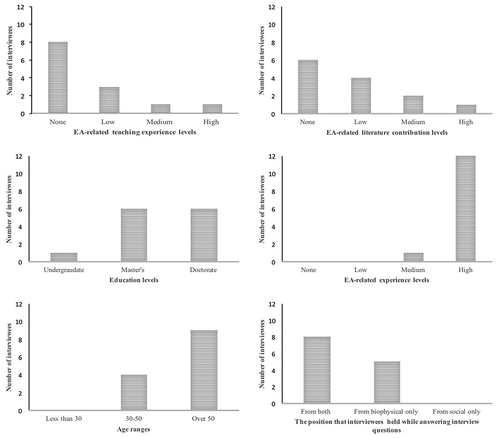Figures & data
Table 1. Satisfaction levels (%) expressed by EA scholars and practitioners (i.e. satisfied, neither satisfied nor dissatisfied, and dissatisfied) with EA components. Bold numbers in the table refer to the relatively higher percentages of survey respondents. The topics were grouped based on a general understanding of their frequencies included in an EA system.
Table 2. Statistical significance in differences between satisfaction levels expressed by EA scholars and practitioners with EA components. Selected confidence level is 90% and 95% (alpha = 0.1 and 0.05).
Table 3. Importance levels (%) and statistical significance in the differences between the importance levels expressed by EA scholars and practitioners (i.e. low, medium, and high importance) with influential factors in influencing quality of science in EA. Factors were grouped based on the level of importance perceived by scholars and practitioners. Selected confidence level is 90% and 95% (alpha = 0.1 and 0.05).
Figure 2. Satisfaction levels (%) by scholars and practitioners with the contribution of the scholarly scientific community to the EA process. Statistical differences indicated that EA scholars and practitioners have essentially the same satisfaction levels (p = 0.278, alpha = 0.1).

Table 4. Power and influence levels (%) perceived by EA scholars and practitioners (i.e. low, medium, and high power and influence) in the generic EA process. Stakeholders were grouped based on the level of influence perceived by scholars and practitioners. The highest percentage of each stakeholder was italic in the table.


